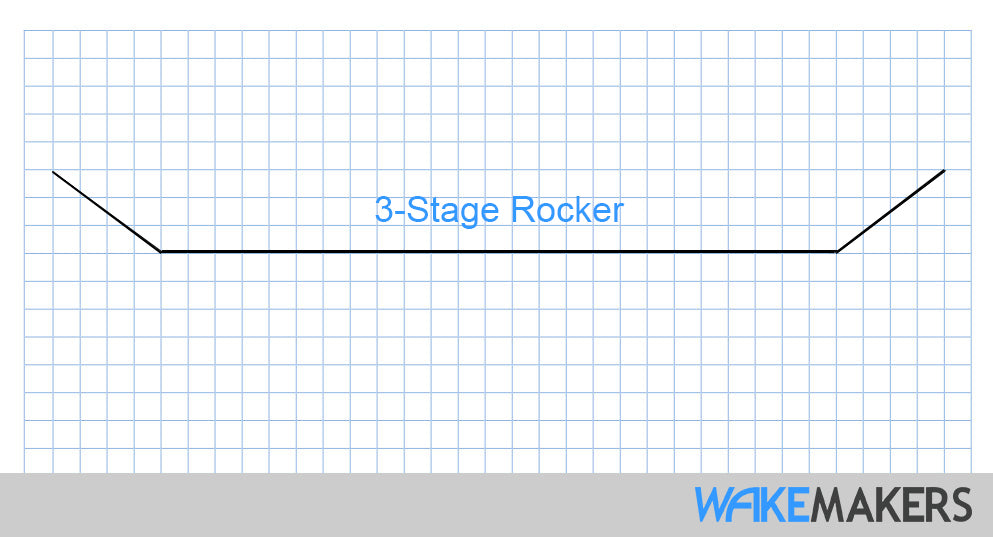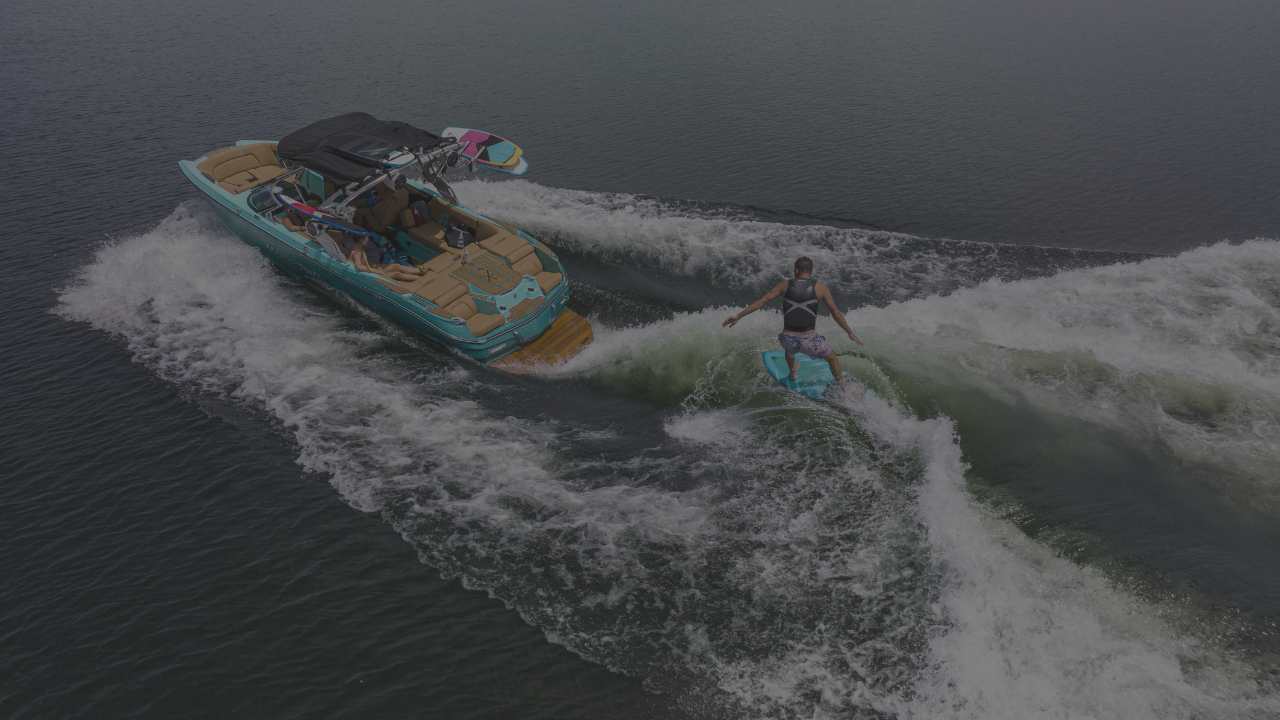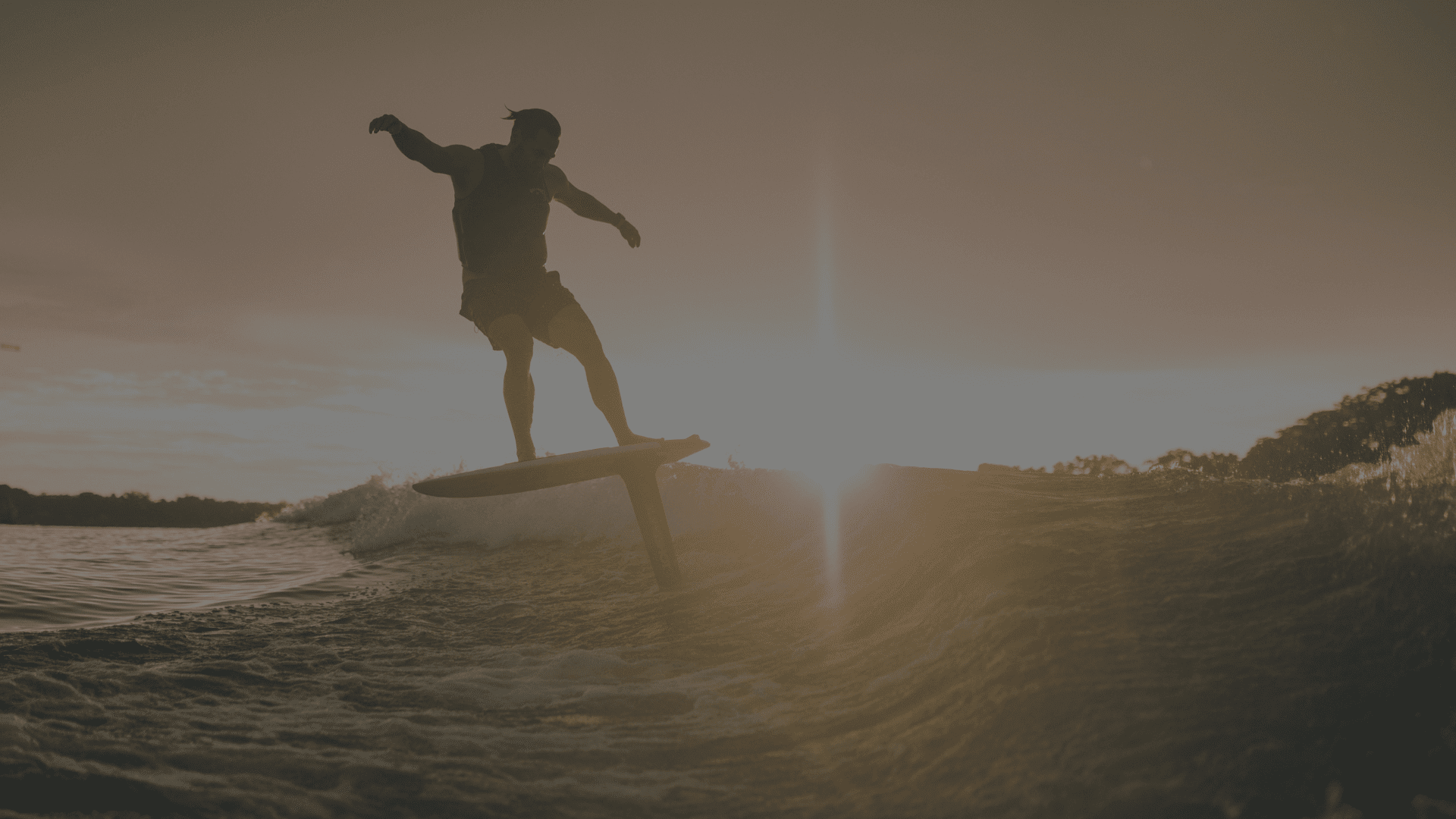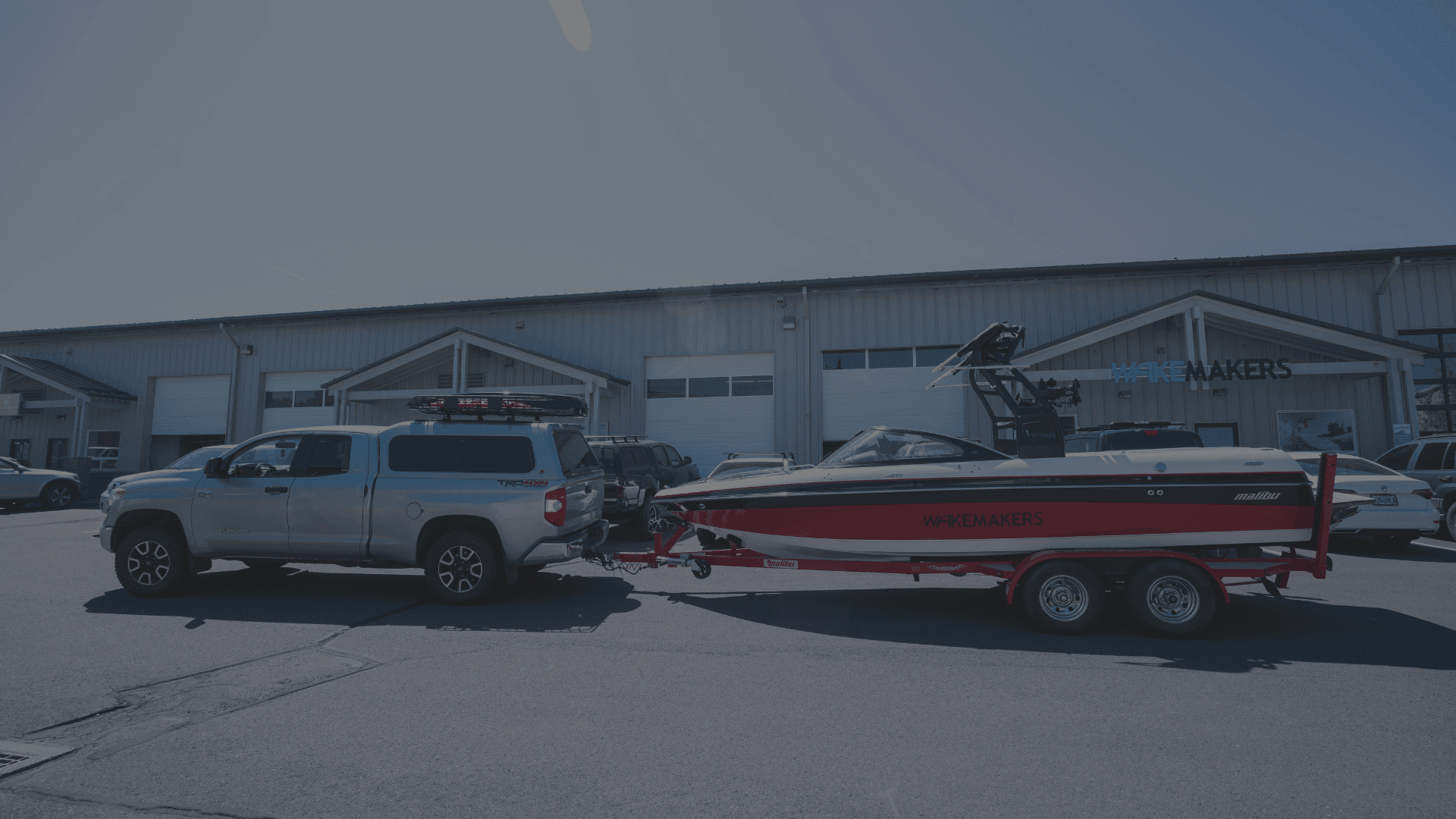WakeMAKERS Wakeboard Size Chart & How to Choose a Wakeboard
Our team of devoted product experts has spent countless hours in the R&D lab (our local lake) tirelessly testing out all the new boards, meticulously taking notes, and ultimately creating this buyer's guide for you and all the other wakeboarders out there. We hope you find this buyer's guide insightful, enjoyable, and ultimately the resource that helped you find that perfect new wakeboard.
Without wasting any more time, let's get started! To begin we will discuss determining the right size board for you.
Wakeboard Sizing Chart
The first and arguably most important step in buying a new wakeboard should be figuring out what size board will work best for you. Check out our sizing chart below to find out the suggested board size based on your weight
NOTE - If multiple riders will be using the same board it is best to go with a board in the size range of the largest rider. Smaller riders will be able to adapt to riding a larger wakeboard no problem, but the bigger riders in your group will have a much more difficult time trying to ride on a wakeboard that is too small for their size.
We suggest following our suggested size based on the chart above. However, some wakeboarders prefer to size down or size up. So, how will that impact how the board's overall ride and feel on the water? Let's find out!
Sizing Down
Only advanced riders should ever consider sizing down when buying a new board. A smaller wakeboard will have less swing weight and will help a rider spin faster when executing advanced tricks. The smaller size will provide a more aggressive feel and quicker edge-to edge transitions. A rider will have more control over a smaller board due to less surface area but there is the risk of harder landings and an increased chance of burying the nose of the board.
Sizing Up
Sizing up is a popular option for novice riders. A bigger board will be slower through the water but will be a more stable, smoother ride. The larger surface area underneath the rider will make landings softer and help prevent catching your edge. Sizing up will give the rider more forgiveness but will be more sluggish as far as manueverability is concerned.
Once you have dialed in the right size for you, the next step is to do an honest self-assessment of your riding ability.
Beginner Level Wakeboards
We recommend that beginners start out with a mellow 3-stage rocker board that has rounded center rails. A board like this will give you a more forgiving ride on the water and help you progress. Boards designed for beginners will provide a stable and forgiving ride. *We highly recommend getting an asymmetrical wakeboard if you are new to wakeboarding or board sports in general.
WakeMAKERS Staff Pick for the Best Beginner Wakeboard
- Hyperlite State 2.0: Hyperlite created this user-friendly shape to help beginners learn to ride and progress their skills. The most obvious feature about this board is the asymmetrical shape. The shorter toeside edge makes learning to edge and jump the wake easier due to less rail needed to initiate when applying toeside pressure. Subtle toeside footbed risers were also added to make it easier for the rider when applying pressure to their toeside edge. The heelside edge is a more traditional design for that classic edge and approach towards the lip of the wake.
Intermediate Level Wakeboards
Intermediate riders have toeside and heelside edging down, jumping the wake and starting to work on their bag of tricks. You want a board that will help you progress but that you won't quickly outgrow as your riding improves.
WakeMAKERS Staff Pick
- Liquid Force RDX: An extremely versatile 3-stage rocker shape, designed to provide a perfect balance of control and fun on the water. Its quad molded-in fins offer ample grip when required, while still allowing for an exciting, playful ride. The progressive 3-stage R\rocker delivers exceptional pop for jumps and tricks, and the single to double concave center hull ensures smooth landings even when you go big. A great board for intermediate riders looking to take their game to the next level.
Expert Level Wakeboards
Stomping spins and inverts already? We'd recommend checking out the advanced/expert level wakeboards. These are usually pro model boards that are designed to create a fast, aggressive ride on the water. These boards offer the latest and greatest in wakeboarding technology, designed for those that are absolutely crushing it behind the boat.
WakeMAKERS Staff Pick
-
Ronix One Blackout: Ronix has outdone themselves in 2023 with the latest version of their 3-Stage Rocker Icon wakeboard. This board has been stripped of 1.5 lbs. to make it even more agile and high-energy, with every wake jump feeling like a double up, thanks to its enhanced kick and reduced weight. Endorsed by wakeboarding legend Nic Rapa, this board is perfect for experienced riders looking to maximize their hangtime off big wakes. This popular high-end series has been a fan favorite for 17 years, and this latest version delivers added vertical explosion when leaving the water, with a smooth ride on top.
Wakeboard Bindings
Since the bindings are the only thing connecting the rider to the wakeboard, it makes sense that we touch on this topic here. We typically recommend buying the board and bindings as a package to save some coin. However, you'll want to dig into our Wakeboard Bindings Buyer's Guide if you're newer to the sport or haven't found the right fit yet. Some people would even argue that finding bindings that are the right fit for you is more important than what wakeboard you are riding. We certainly wouldn't dispute that.
The rocker is the difference in shape between the board's belly and its tips. You can easily recognize the rocker by laying the board on the ground or viewing the side profile. The two most common rocker types are continuous rocker and 3-stage rocker. However, in recent years wakeboarding has seen an uptick in cambered wakeboards. The next section will discuss how each of the rocker types affects the board's overall feel on the water and riding style.

A continuous rocker board is just what it sounds like, its a long continuous curve from tip to tail. Continuous rocker is the original wakeboard rocker that has been around since the early 90's and still remains largely popular tdoay.
Pros: Smooth and consistent release off the wake. More glide speed. Softer landings.
Cons: Less explosive "pop" off the wake than a 3-stage wakeboard.

Many riders enjoy a 3-stage rocker due to the increased "pop" and explosiveness it offers in comparison to a continuous rocker board. It is more common on boards designed for intermediate to advanced wakeboarders.
Pros: More explosive "pop" off the wake. Easier to go big and really send it.
Cons: Slower glide speed. Less consistent pop.
Camber rocker was introduced to the wakeboard scene several years ago. This shape helps riders leave the wake in a more ergonomically correct body position. Sound confusing? Think of it this way: When you ride a 3-stage or continuous rocker board the majority of your weight is over your back foot. A camber board gives you a more even weight distribution which gives you a different kick off the wake and smoother landings on re-entry.
Pros: More natural body position. Easier on your body to ride for extended periods of time.
Cons: Rides differently than 3-stage and continuous rockers so it may take some time to adjust to. Also, the pop off the wake is different because your weight is more evenly distributed.
Hybrid rocker boards are just what they sound like; a blend of 3-stage and continuous rocker lines. These hybrid shapes have gaining significant popularity in recent years and are a good fit for those riders that can't choose between a continuous or 3-stage rocker board.
The bottom of a wakeboard (base) features different concaves, channels, molded fins and fin placements that determines how the board rides in the water. The graphic is what will catch your eye at first glance but you will want to factor in the base shape and design when choosing your next wakeboard as it dictates how the board rides.

Featureless
The base of a wakeboard is said to be featureless if it is without molded-in fins or channels. This leaves the performance of the board entirely up to the shape, rocker, and fins.Channels
Channels act as long and less obstructive fins along the base. They help direct the flow of water underneath your board, break up water tension when you're landing, and protect your knees from a higher energy impact.V-Shape Spines
Similar to channels, V-shaped spines help break up water during impact, The V-shaped designed also helps the rider transition quicker from edge to edge. Common on 3-stage rocker wakeboards.There are two basic fins types; Molded-in fins (permanent) and removable fins. Most beginner style boards feature a blend of molded-in fins and removable fins. The longer your fin is the more "locked-in" your board will feel on the water, The larger fins create a more stable, predictable ride in the water for beginners. As you advance you'll want a looser feel on the water and shorter fins will give you just that. If you're riding the cable park you will want to remove your fins so you can get the full feel of the obstacles and not risk catching a fin as you are sliding a feature.
A board's edges impact how the board cuts through the water. Sharp edges are better for riders who have an aggressive, hard-charging style because they grip the wake better and allow your board to react quickly. Rounder edges are better for riders with a more laid-back riding style. Variable Edges give boards give you the best of both worlds; grip and cutting power at the tip and tail and a rounded and forgiving edge near the middle of the board.
There used to only be boat riding. The emergence of cable parks around the country has led board manufacturers to design wakeboards for either boat or cable riding. Cable and Park boards are generally more flexible and they have mellow rails so they don't catch as easily on features at the cable park. Boat boards are usually stiffer and they feature sharper rails for faster edging into the wake. There are even boards now designed for boat and cable!
Boat
If you only ride behind the boat you will want to find a wakeboard that gives you sufficient "pop" off the wake. These boards will also have sharper edges that allow them to approach the wake with more momentum and speed.
Cable
It seems like new cable parks are popping up every day and the popularity of cable riding is quickly growing. If you only ride cable you'll need a board with a softer flex, more forgiving rails, and a durable base. We recommend sizing up a little bit if you only ride cable because the pull is consistently 4mph slower than riding behind a boat.
Boat/Cable
As cable riding gets bigger, wakeboarders are splitting time between the cable park and the boat. Brands have responded by designing boards that thrive at both settings. No need to get a cable board AND a boat board.
If you are buying BOTH a wakeboard and bindings, you should strongly consider one of our awesome wakeboard packages. When packaged together you save lots of $$$ on your next wakeboard setup. Yay for extra gas money!





Post Comments
0 Item(s)